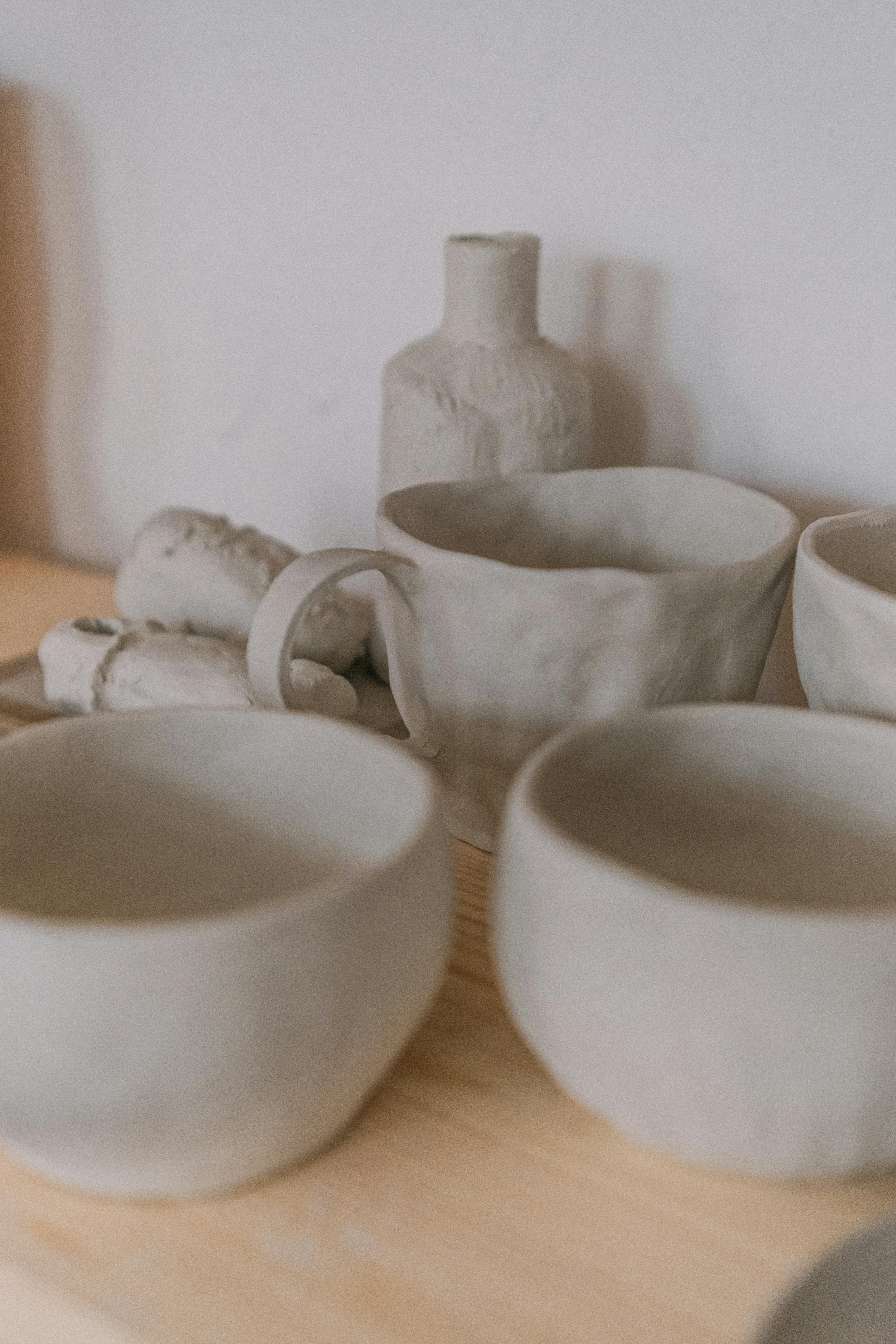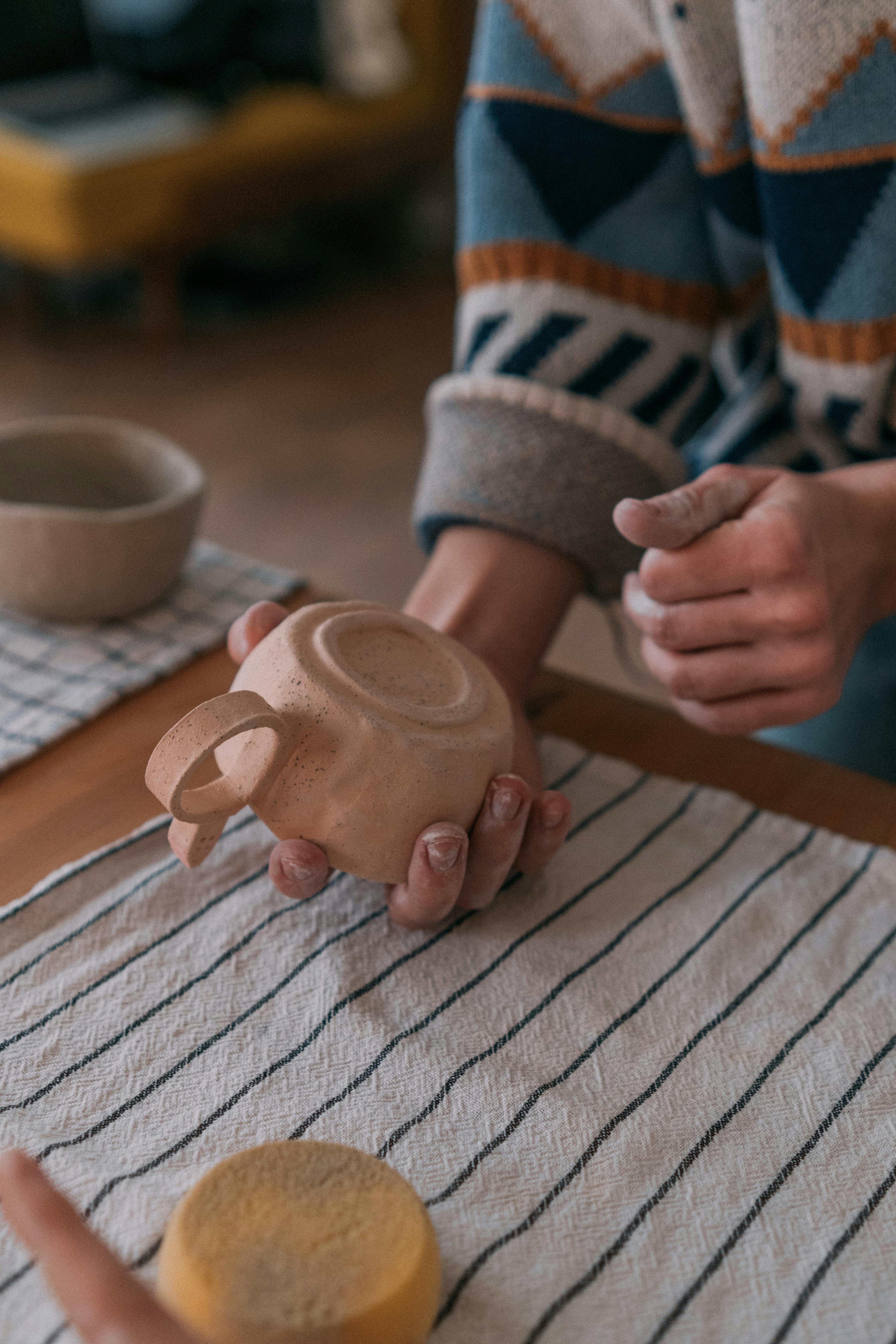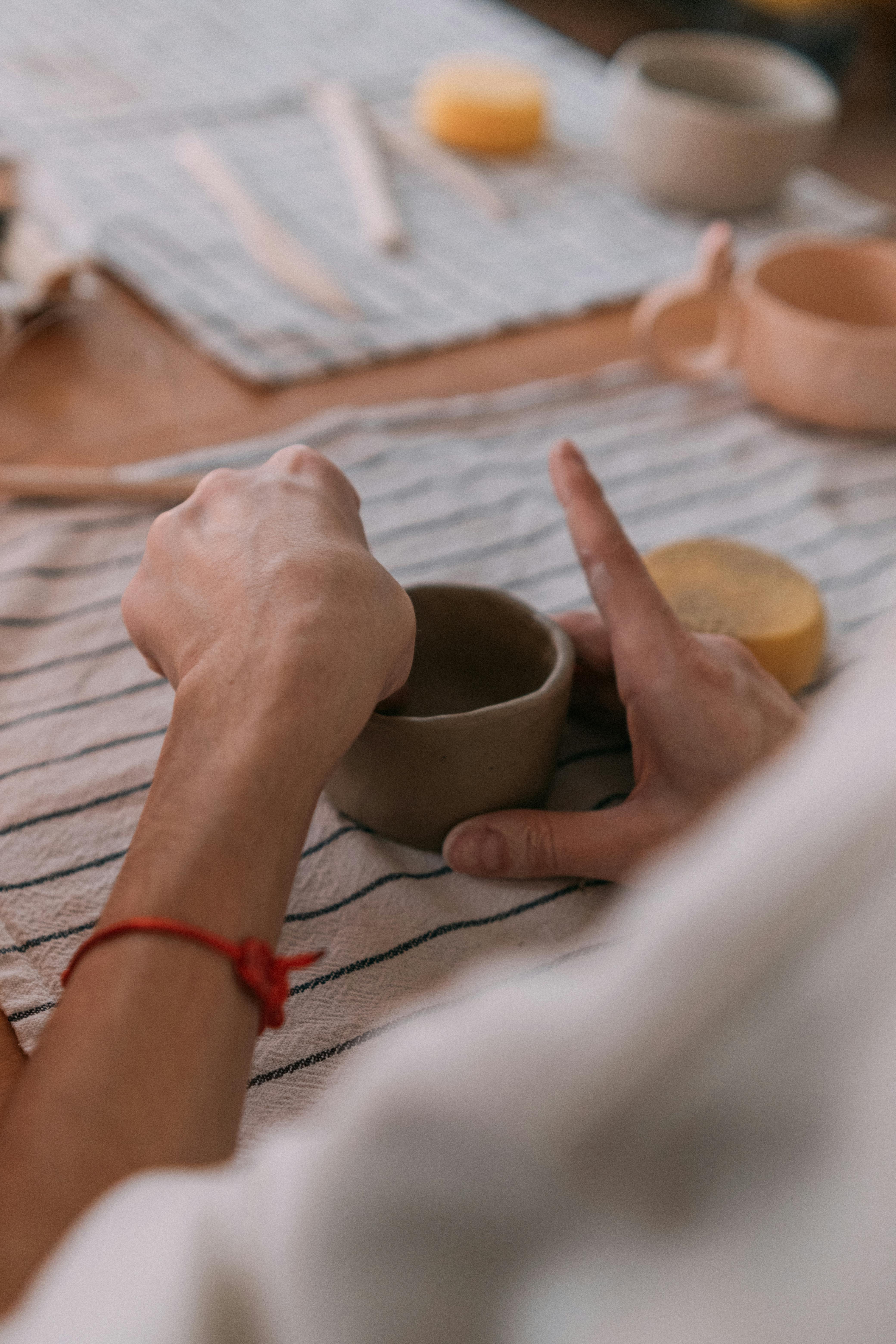I’ve always been fascinated by the art of pottery. The way skilled artisans transform a lump of clay into a beautiful and functional piece of art never fails to amaze me. So, when I had the opportunity to go on a behind-the-scenes journey into the world of handcrafted pottery, I couldn’t resist. From shaping the clay on a spinning wheel to the intricate process of glazing and firing, this article takes you on a captivating journey through the craftsmanship and dedication it takes to create these unique pieces. Join me as we explore the meticulous art of crafting handcrafted pottery.

The History of Pottery
Pottery has a long and fascinating history that dates back thousands of years. It is believed to have originated around 25,000 BCE, during the Paleolithic era. The earliest pottery objects were simple and practical, made from clay and hardened in fires. As civilizations developed, pottery became more complex and diverse, reflecting the culture and artistic styles of different societies. From ancient civilizations such as Egypt and Mesopotamia to the renowned pottery of China and Greece, pottery has played a significant role in human history.
Origins and Evolution through the Ages
The origins of pottery can be traced back to the early agricultural societies where pottery vessels were used for storage and cooking. These vessels were typically made using coiling or pinching techniques, which involved building the walls of the vessel by stacking or shaping coils of clay. Over time, pottery making techniques evolved, leading to the invention of the potter’s wheel around 3,000 BCE. The introduction of the wheel revolutionized the pottery industry, allowing for more precise shaping and greater production efficiency.
Cultural Significance across Different Civilizations
Pottery has held great cultural significance in various civilizations throughout history. In ancient Egypt, pottery was not only used for practical purposes but also for religious and funerary rituals. Elaborately decorated vessels were created to hold offerings or to accompany the deceased in the afterlife. In China, pottery became highly revered during the Tang Dynasty and Song Dynasty, with the development of exquisite porcelain that was sought after by collectors all over the world. In Greece, pottery played a crucial role in daily life and was adorned with intricate designs depicting scenes from mythology, history, and daily activities.
Modern Resurgence of Pottery Making
In recent years, there has been a resurgence of interest in pottery making. Many people are drawn to the therapeutic and creative aspects of working with clay. Artisans and hobbyists alike are rediscovering the joy of crafting pottery by hand. Pottery studios and workshops have sprouted up around the world, offering classes and resources for individuals interested in honing their skills. The rise of social media has also contributed to the popularity of pottery, with enthusiasts sharing their creations and techniques online.
Understanding the Basic Materials
To create pottery, it is essential to understand the basic materials involved in the process. Clay, the primary material used in pottery making, comes in various types, each with its distinct properties. The most common types of clay are earthenware, stoneware, and porcelain. Earthenware is a low-fired clay that is easy to work with and commonly used for decorative or functional pieces. Stoneware is a high-fired clay that is more durable and suitable for everyday use. Porcelain is a refined clay known for its delicate appearance and translucent quality.
In addition to clay, there are several tools and equipment that are necessary for crafting pottery. These include a potter’s wheel for wheel throwing, various hand building tools such as a rolling pin, wooden modeling tools, and a kiln for firing the finished pieces. It is important to invest in high-quality tools and equipment to ensure optimal results.
Selecting the right glazes is another crucial aspect of pottery making. Glazes not only provide a protective coating for the pottery but also add color and texture to the finished piece. Glazes come in a wide range of colors and finishes, including gloss, matte, and crackle. It is important to carefully consider the desired effect before selecting a glaze and to follow proper application techniques to achieve the desired result.

The Design Process
Designing pottery pieces is an exciting and essential part of the pottery-making process. Finding inspiration for pottery pieces can come from a variety of sources. Nature, architecture, and cultural motifs are often sources of inspiration for many potters. Visiting art galleries, museums, and even exploring the local environment can spark creativity and lead to unique design ideas.
Once inspiration strikes, it is time to start sketching designs and planning the execution. It is helpful to create multiple sketches to explore different possibilities and refine the design. Considerations such as functionality versus aesthetic appeal should be taken into account. For functional pieces, such as bowls or mugs, it is important to ensure that the design allows for ease of use and comfort. For purely decorative pieces, the focus can be on exploring unique shapes and intricate designs.
Preparation of Clay
Before the clay can be shaped into pottery, it needs to be properly prepared. This involves two important steps: wedging and conditioning the clay.
Wedging is the process of removing air bubbles from the clay to prevent explosions during firing. This is done by kneading and pressing the clay on a smooth surface, such as a wedging table. Wedging not only removes air bubbles but also helps to homogenize the clay and improve its plasticity.
Once the clay has been wedged, it needs to be properly conditioned for use. Conditioning involves adding the appropriate amount of water to achieve the right consistency for working with the clay. This can be done by slowly adding small amounts of water and kneading the clay until it reaches the desired consistency. Properly conditioned clay should have a smooth, pliable texture that is easy to work with.
When working with clay, it is important to store any unused clay properly to prevent it from drying out. Wrapping it in plastic or storing it in an airtight container can help to keep the clay moist and workable for future use.

Shaping Techniques
There are several shaping techniques that can be used to create pottery, including hand-building methods and wheel throwing.
Hand-building methods, such as pinching, coiling, and slab building, involve shaping the clay using only your hands and basic hand tools. Pinching involves using your fingers to pinch and shape the clay into desired forms. Coiling is the process of creating long coils of clay and stacking them to build up the shape of the pottery piece. Slab building involves creating flat slabs of clay and using them to construct the walls of the vessel.
Wheel throwing is a more advanced technique that requires a potter’s wheel. The process involves centering the clay on the wheel and shaping it with the hands while the wheel spins. Wheel throwing allows for precise shaping and symmetry and is commonly used for creating bowls, cups, and other cylindrical forms.
To add texture and details to pottery pieces, various techniques can be employed. These include impressing the clay with textured materials, carving patterns or designs, and adding clay appliques. These techniques can create visual interest and enhance the overall aesthetics of the finished piece.
Drying and Bisque Firing
Once the pottery has been shaped, it needs to be dried thoroughly before it can be fired in the kiln. Proper drying is crucial to prevent the piece from cracking or warping during firing.
It is important to dry pottery slowly and evenly to avoid uneven drying and potential damage. This can be achieved by placing the pottery in a cool, well-ventilated area away from direct sunlight. Turning the pieces periodically can help to ensure even drying.
After the pottery has been dried, it is ready for the bisque firing process. Bisque firing involves firing the pottery at a low temperature to remove any remaining moisture and make the piece more durable for the glazing process. Bisque firing also prepares the surface of the pottery to better absorb the glaze.
Before placing the pottery in the kiln for bisque firing, it is important to prepare the pieces properly by ensuring they are free of any dust or loose particles. This can be done by gently wiping the surface with a damp sponge or cloth.

Glazing Your Pottery
Glazing is the final step in the pottery-making process and involves applying a glaze to the bisque-fired pottery to add color, texture, and a protective coating. Selecting the right glaze is crucial to achieving the desired effect.
Glazes come in various types, including opaque, transparent, matte, and glossy. The choice of glaze depends on personal preference and the desired final appearance of the piece. It is crucial to consider the firing temperature range of the glaze and the type of clay used to ensure compatibility and prevent any undesirable effects, such as cracking or crazing.
The application of glaze can be done using different techniques, including brushing, dipping, pouring, or spraying. Each technique has its advantages and can create unique effects. It is important to follow proper glaze application techniques to ensure an even and consistent application.
Once the glaze has been applied, the pottery is ready for its final firing in the kiln. During this firing, the glaze undergoes a transformation, melting and fusing with the clay body to create a beautiful and durable finish.
The Final Firing
The final firing of pottery involves bringing the kiln to the appropriate temperature and holding it for the required amount of time. The firing temperature for glaze firing depends on the type of glaze used, ranging from low fire to high fire. It is important to follow the manufacturer’s instructions for firing temperatures and times to achieve optimal results.
After the pottery has been fired, it is important to allow it to cool slowly in the kiln to prevent thermal shock and potential damage. The cooling process is an integral part of the firing process and usually takes several hours or even days, depending on the size and thickness of the pottery.
During the cooling process, the glaze undergoes a final transformation, solidifying and creating the desired finish. It is crucial to resist the temptation to open the kiln too soon, as this can lead to cracks or other defects in the finished piece. Patience is key during this stage.
After the Kiln: Finishing Touches
Once the pottery has cooled and been removed from the kiln, there are a few finishing touches that can be applied to enhance the final product.
Sanding and polishing the pottery can be done to create a smooth and refined surface. This can be done using fine-grit sandpaper or special sanding tools designed for pottery. Sanding can help to remove any rough spots or imperfections in the glaze and make the pottery more comfortable to touch.
Adding decorative elements to the pottery, such as handles, knobs, or decorative accents, can also enhance the final appearance of the piece. These elements can be created using additional pieces of clay and attached to the pottery using slip (a mixture of clay and water) or a strong adhesive.
To protect the finished pottery and give it a polished look, it is important to seal the piece with an appropriate sealant or wax. This not only enhances the appearance but also helps to protect the glaze from scratches and stains.
Sustainability in Pottery
In recent years, there has been a growing focus on sustainability in various industries, including pottery. Pottery has the potential to be a sustainable craft, with practices that conserve resources and minimize environmental impact.
One aspect of sustainability in pottery is recycling clay and materials. Unfired clay can be reclaimed and reused by breaking it down into a slurry, allowing the water to evaporate, and kneading it back into a workable consistency. This reduces waste and conserves valuable resources.
Adopting eco-friendly practices in the pottery studio is another way to promote sustainability. This can include using energy-efficient kilns, utilizing renewable energy sources, and minimizing water usage. Recycling and reusing materials, such as glaze materials or packaging, can also contribute to a more sustainable pottery practice.
By creating pieces that are durable and timeless, potters can promote sustainability through pottery. Focusing on craftsmanship, quality, and designs that stand the test of time encourages a culture of mindful consumption and promotes the appreciation of handmade pottery as a sustainable alternative to mass-produced items.
In conclusion, pottery has a rich history that spans thousands of years and has played a significant role in various civilizations. Understanding the materials, techniques, and processes involved in pottery making is key to creating beautiful and functional pottery pieces. With a resurgence of interest in pottery making, the craft has experienced a modern revival, attracting individuals who appreciate the therapeutic and creative aspects of working with clay. By embracing sustainability practices, pottery makers can contribute to a more eco-friendly industry and promote the appreciation of handmade, sustainable pottery in today’s world.
